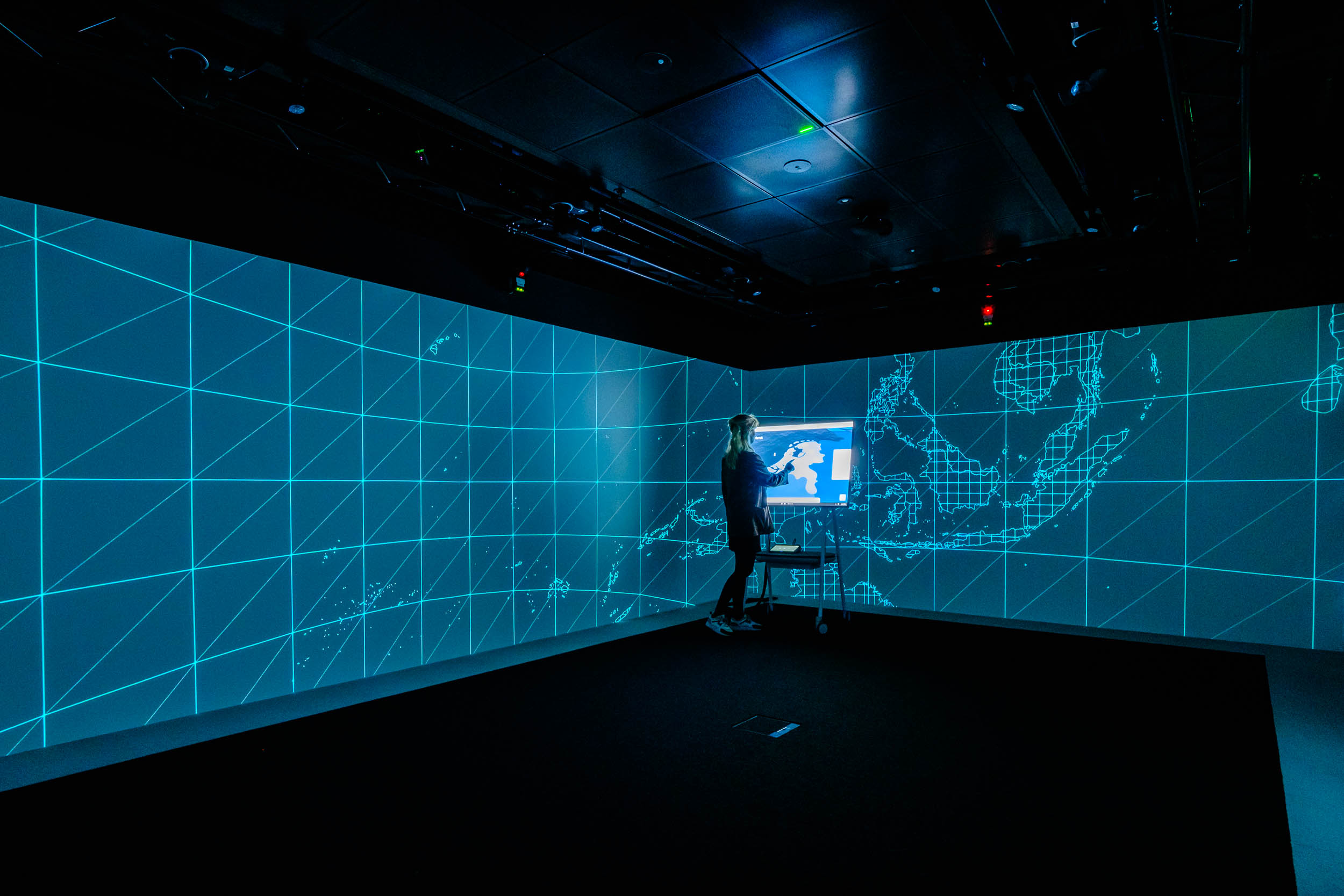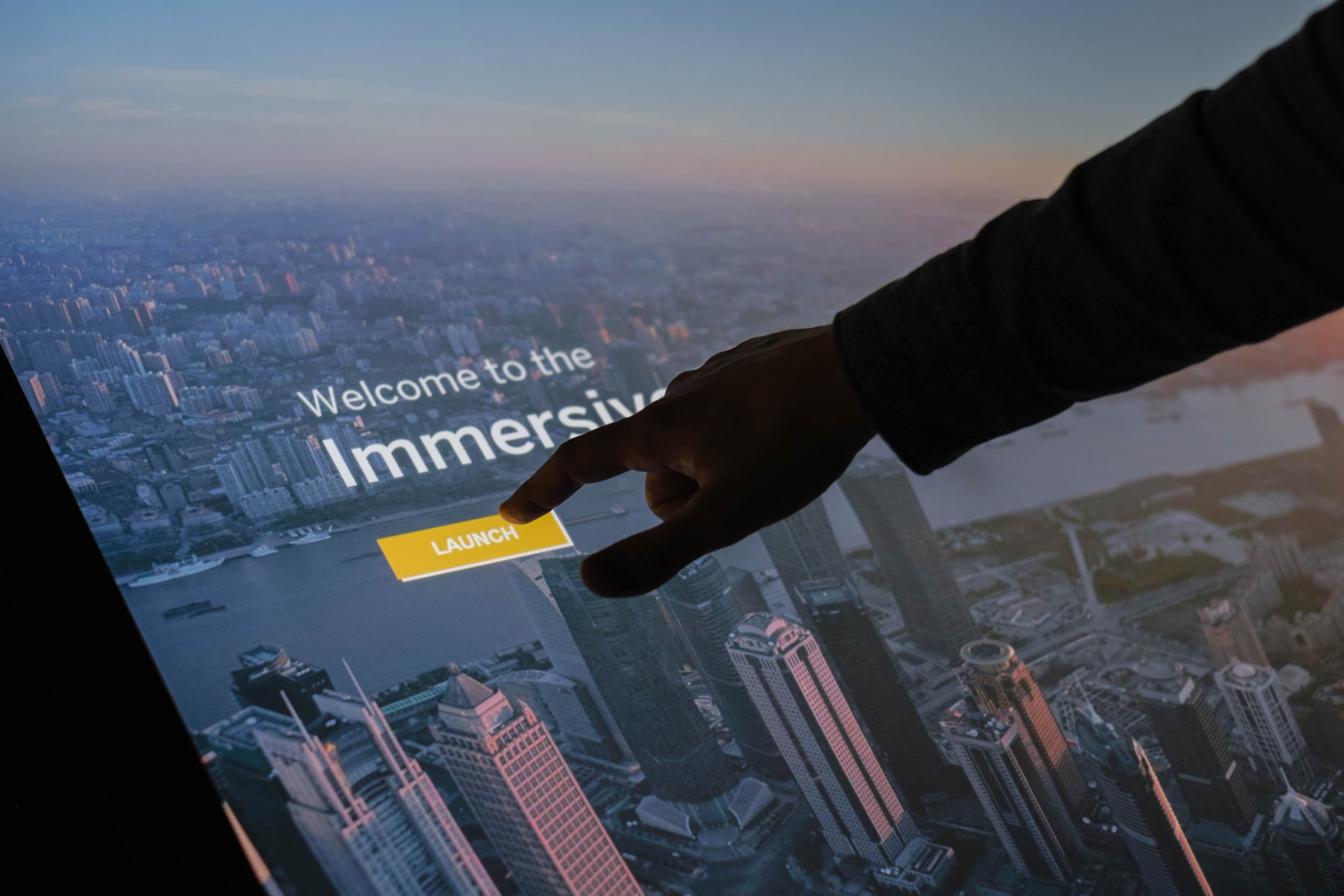Choose digital storytelling software that can address every type of customer
Depending on your position in the market, your customer will be a retailer or a consumer. This entails that your value proposition is distinctly honed to each group and communicated in terms that really relate to them. Being able to provide a uniquely-tailored digital story will help to make sure each audience hears and experiences the right message.
To really target each customer with an on-point message, you’ll need a digital storytelling software package that is versatile enough to do this. The Hyro storytelling software can help you achieve this granular experience.
Users can easily create a fully-customized experience from a common digital library. It can show your stories in a fully immersive experience center, or digital video online, or other technologies like VR or XR (including virtual studios).
Whichever medium and AV setup, the digital storytelling software needs to be able to handle it all – and Hyro can. The Hyro storytelling software can help you achieve this granular experience. Users can easily create a fully-customized experience from a common digital library. It can show your stories in a fully immersive
experience center, or digital video online, or other technologies like VR or XR (including virtual studios).

How a Brand Experience Center can help B2B and B2B2C customers see value for themselves
Many brands sell to the consumer via multi-brand retail stores. These retailers have their own brand story and brand identity. This is important to recognize; if you can show how your brand fits with their identity, it’ll help them see how your products fit in.
It’s still common for buyers to decide which product ranges up to a year in advance - sometimes even longer. For your brand, this means you cannot rely on being on-trend now to sell to a buyer. Instead, you should show how your offering has a positive impact on their retail experience, and how it delivers value.
With a carefully-curated brand experience center, your products can be shown as being complementary to the buyer’s own brand image.
The focus of your brand experience center should still be about your brand identity - this should be consistent. Don’t change your identity for each customer; instead, you can tailor your brand experience center to highlight exactly how your brand identity dovetails with that of the buyer. When you can show your products in their own context, it will help them to visualize how your brand fits with their own (perfectly). You can also leverage an immersive experience to enable them to play with different possibilities.
Using an immersive experience to capture B2B (and B2B2C) customers
Your ultimate goal when engaging with business customers is to offer the same experience as a traditional ‘buyer visit’ - but through a digital medium. Use this opportunity. Take the experience to a whole new level, and show possibilities that are impossible to demonstrate otherwise. Convert your immersive experience into a digital showroom, in which you can really play with the possibilities. Using an immersive experience you can achieve practically anything.
In a digital showroom you can:
- Enable the buyer to zoom-in with detail into the products.
- Show different possibilities: new designs, cuts, materials, or new colors.
- Show your products in their store setting, so they can see how it fits with their brand and vision.
- Employ a full range of merchandising tools – digitally – to demonstrate exactly how your offering can enhance their sales.
With a digital showroom, you aren’t limited by physical reality. You can take the buyer into any number of environments, from showing the factory floor where your goods are made, to exploring different possibilities for layout in-store. You can also demonstrate technology you can use to help your goods to sell, like touchscreen displays. This kind of interaction can strengthen the relationship with business customers.
It shows them that you can be what they need, while also conveying your own brand story. You just can’t do that with a traditional PowerPoint presentation.
B2C: Digital storytelling that speaks to the consumer
Addressing the consumer directly with a digital storytelling experience that speaks to them contributes to enhanced sales. We can see many examples where big brands advertise directly to the consumer without selling directly to them.
It demonstrates to your main customers (the retailers) that you are a valuable brand; one that consumers want. It also stokes more interest in your brand at the grassroots level. Even if you don’t sell directly to the consumer, you should still execute digital storytelling that targets them.
Who knows – maybe in the future your company might adopt a D2C or B2C model. In any case, it helps to create a customer base that knows your brand - and loves it.
Creating an experience for the Digital consumer
Once again, you aren’t limited to the constraints of physical reality here. Gen Z is accustomed to using the virtual space/metaverse to shop and interact. You can explore the possibilities for virtual and XR experiences in-store too.
Touch-screen experiences can keep consumers engaged with your brand, and enable them to put themselves into your brand story. Using in-store technology or smartphone apps, your consumers can explore new possibilities, new colours, styles and features.
You can also help them to include your brand in their own story by linking online shopping and virtual fitting-room experiences to their social media. This way, your consumers become brand evangelists that put your products at the center of their own stories.
The key to success is to enable your consumers to tell their own story, but to facilitate how this is done, so you can retain some control over your own brand story.

Bring your brand experience to the world of the customer
Whether you are using digital storytelling software to make sales to business customers, or using it to foster a grassroots interest among consumers, your brand storytelling needs to be properly tuned to the audience. This means speaking to them from their own world, and relating to their own experiences.
Your customer will always recognize the value of something when it is shown in the context of their world. Storytelling enables your brand to step from one world to the next, and tell your story in the right context. While the right digital storytelling software can help you to tell distinct stories, it’s still up to you to understand what the customer wants to hear and needs to see.
Frequently Asked Questions.
Does digital storytelling really shorten sales cycles?
Yes. Doubt is one of the biggest deal-killers, and digital storytelling is a powerful tool for clear communication - which helps to dissolve doubts. When a customer can actually see what you want them to see (instead of needing to visualize it themselves), they form an experiential memory of it. This makes it easier for a customer to feel that they have all the facts for making a decision.
How often is digital storytelling or immersive tech used to assist sales to retailers?
Digital storytelling is being used more frequently by companies operating in all sectors - including retail. It has the biggest impact in corporate contexts, like buyer visits and VIP presentations. Right now, it’s used primarily by the most innovative companies, but as the technology becomes more accessible it is sure to find wider applications too.
What does a brand experience center achieve?
Most companies now recognize that brand identity is everything. In a world full of competitors, you need to distinguish your value proposition in terms of your brand story. A brand experience center does this. Visitors are saturated by your brand story at every touchpoint, so the value of your offering is never in doubt.
How does Digital Storytelling software work?
Digital Storytelling Software helps you to manage how digital stories are shown on different media channels and AV solutions. It helps you to create unique experiences that can be served to the right audience at the right time.
What does an Immersive Experience solution cost?
Immersive Experiences deliver immense value, so they don’t come cheap. There is an option to lease a temporary solution from Purple, which can help to demonstrate the potential without committing to a permanent installation. There are many different setups, arrangements and technologies that can be used, so a lot of variables to consider. We can discuss these and advise what might work best for you.
There are many different setups, arrangements and technologies that can be used, so a lot of variables to consider. We can discuss these and advise what might work best for you.









